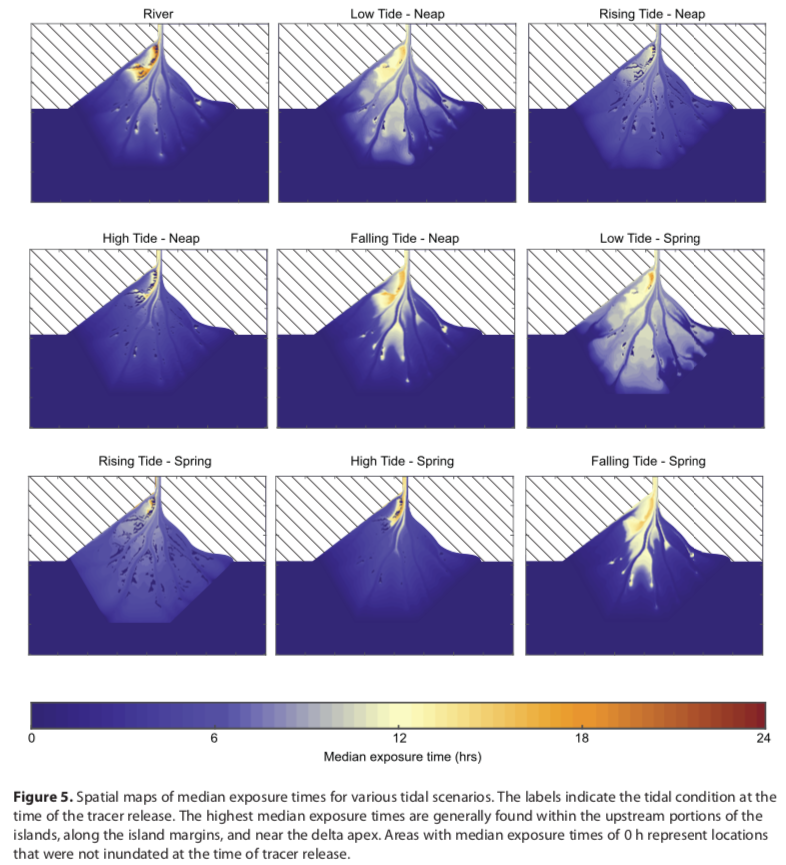Channel-island hydrological connectivity affects exposure time distributions in a coastal river delta
ABSTRACT: The exposure time is a water transport time scale defined as the cumulative amount of time a water parcel spends in the domain of interest regardless of the number of excursions from the domain. Transport time scales are often used to characterize the nutrient removal potential of aquatic systems, but exposure time distribution estimates are scarce for deltaic systems. Here we analyze the controls on exposure time distributions using a hydrodynamic model in two domains: the Wax Lake delta in Louisiana, USA, and an idealized channel-island complex. In particular, we study the effects of river discharge, vegetation, network geometry, and tides and use a simple model for the fractional removal of nitrate. In both domains, we find that channel-island hydrological connectivity significantly affects exposure time distributions and nitrate removal. The relative contributions of the island and channel portions of the delta to the overall exposure time distribution are controlled by island vegetation roughness and network geometry. Tides have a limited effect on the system’s exposure time distribution but can introduce significant spatial variability in local exposure times. The median exposure time for the WLD model is 10 h under the conditions tested and water transport within the islands contributes to 37–50% of the network-scale exposure time distribution and 52–73% of the modeled nitrate removal, indicating that islands may account for the majority of nitrate removal in river deltas.


